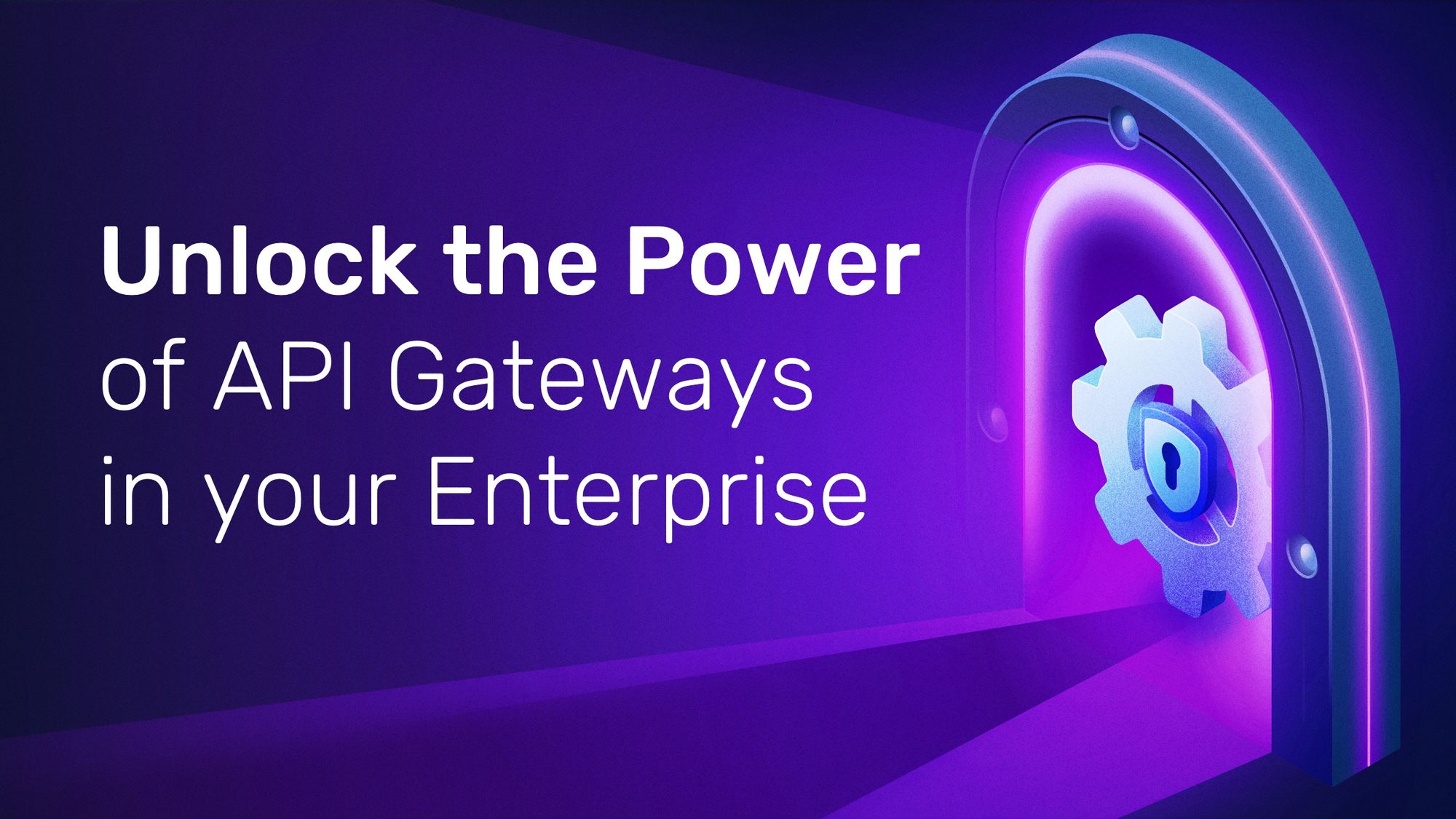Unlock the Power of API Gateways in your Enterprise

As enterprise organizations continue to embrace modern application architectures, APIs increasingly occupy a significant portion of their software development and delivery efforts. APIs are often implemented today as microservices designed to underpin user-facing web applications and are responsible for the proper front-end or back-end code functionality.
In addition, APIs are rapidly becoming commercialized as enterprise products in their own right. As APIs increase in scope and complexity, inevitably, there are concerns that engineering teams must address as part of any effective implementation. This article discusses some of these growing pains and reviews an essential ingredient for any modern API operating environment that can help alleviate them: API gateways.
API growing pains
With the abundance of language-specific frameworks available to developers today, an API can advance rapidly from concept to initial implementation. However, this accelerated progress can be a bit misleading. Before developers begin scaling an API for widespread use, many critical issues and concerns aren’t always apparent from the outset.
Authentication and Security
An immediate question stakeholders have with APIs is limiting access to known users and protecting endpoints from malicious entities. The first issue distills down to a need to authenticate users when they make requests. Integrating support for identity and authentication as part of each API codebase can become a burdensome fixed cost, particularly as the number of APIs grows within an organization. Similarly, protecting API endpoints often requires employing protection mechanisms such as connection and rate limits as a standard requirement across all APIs.
Analytics
As APIs gain traction, technical and business stakeholders need to understand the number of resources consumed processing a transaction. Having clarity around usage allows product and engineering to plan for any scaling concerns (e.g., endpoints that exercise data storage resources may warrant architectural planning to support increased load / IOPs) and enhancements to the API definitions. From a business standpoint, analytics are needed to support billing end-users for commercial APIs and can also be used to understand COGS for services that depend upon paid third-party APIs.
Lifecycle Management and DevOps
There is a continuous need to update deployments with software changes as APIs evolve. Each release constitutes a new implementation version, which must roll out carefully to avoid disrupting users with downtime or regressions. Moreover, in some cases, teams may decompose user-facing APIs into multiple underlying independently versioned backend API services. Managing these aspects is a challenge for even a single API implementation, and without a solution that helps simplify day-to-day operations, they can constitute a significant burden when DevOps empowered enterprise teams are responsible for multiple APIs
High Availability
Whether they’re used to implement web applications or utilized by users directly, enterprise APIs must be highly available (HA). Achieving HA is never trivial, but organizations must take care to avoid any unintentional single points of failure (SPOFs), particularly with APIs. A corollary is any architectural element incorporated to help manage APIs that support high availability and improve its overall robustness.
API Gateways to the Rescue
Having highlighted various issues that enterprise teams can expect to encounter when managing their APIs, let’s now turn to an approach for addressing them. API gateways are quickly becoming a de facto architectural component for the teams tasked with managing enterprise APIs to solve the pain points discussed.
These solutions consist of a logically centralized application that receives all inbound API calls and then passes them to appropriate backend services, essentially serving as a reverse proxy for APIs. Going beyond this, API gateways provide enterprise-grade authentication and authorization, distributed security features, and other capabilities businesses need to be efficient and scale.
Let's explore how a modern API gateway, Traefik, can solve the challenges we've laid out in this article so far.
Authentication and Security
Traefik's API gateway provides native support for standard enterprise authentication protocols (including LDAP, OAuth2, OpenID, and HMAC), API key authentication, distributed HTTPS, and authorization via an Open Policy Agent (OPA).
Taking this a step further, Traefik adds an additional layer of security with it's native integration with Coraza Web Application Firewall (WAF).
These capabilities allow organizations to integrate and centralize control of API security in one place. Moreover, Traefik supports capabilities such as distributed rate limiting to protect APIs from external traffic.
Lifecycle Management and DevOps
Traefik's API gateway provides various capabilities that can help simplify DevOps in complex environments. It allows operators to configure custom routes so they can map inbound requests to backend APIs in a highly flexible manner. Also, it supports traffic management features, such as mirroring. Teams can use this functionality in support of QA workflows that test API software updates before widespread rollouts.
Monitoring
Traefik simplifies operations and troubleshooting with real-time observability in dynamic environments, and end-to-end visibility for better insight into application uptime and performance. Use the Traefik's dashboard to visualize the status and configuration of your cluster nodes, and real-time traffic metrics. Manage the traffic of your application with distributed features like rate limiting, circuit breakers, and retries, and use automated collections of metrics to track the health of your web applications. Traefik's API gateway also comes with a tracing system you can use to visualize application flows in your infrastructure.
High Availability
Any enterprise API gateway implementation must be capable of deployment in a highly available configuration to avoid becoming a SPOF. Traefik's deployment architecture addresses this requirement and can also be scaled as needed to realize production-grade environments.
Summary
As part of a shift to modern application architectures, enterprises invest resources towards implementing APIs as part of their software development initiatives. Enterprises must adopt management tools in tandem to address operational requirements for production API deployments. By acting as a frontend that receives all inbound requests, API gateways can be a convenient management tool for an organization’s APIs.
Are you interested in test driving Traefik's API gateway for yourself? You can request your free trial here or start with a personalized demo led by a member of our team.



